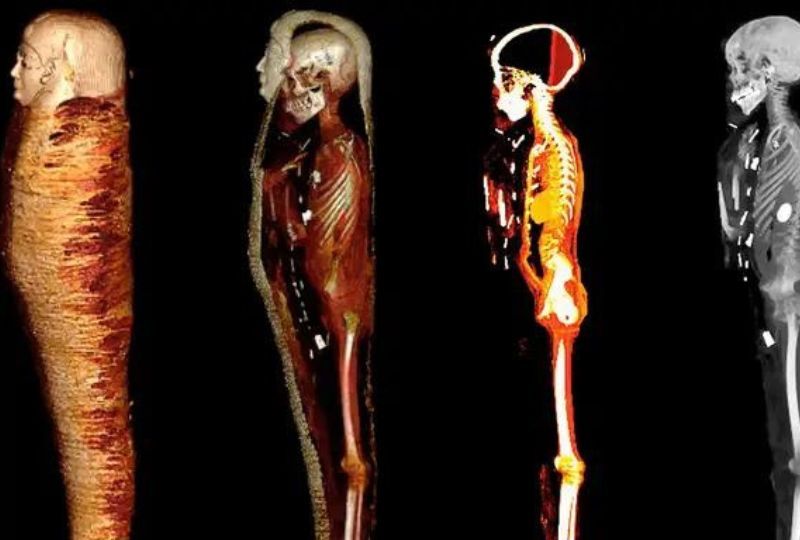Despite being dead for 2,300 years, a young boy's mummy has revealed several very personal details to a team of scientists.
We don't know anything about the boy's mother; they've discovered some odd things about him. The boy preserved over some time.
However, thanks to CT scanning, the researchers could learn more about the desiccated boy without having to unwrap him.
The boy had 49 pricey ornaments on him when he was buried, which indicates that he must have been a wealthy child, according to the Cairo University team, which the lecturer of radiology Sahar Saleem leads. Oh, they discovered through his penis that he could have been a non-Egyptian.
Regarding the priceless amulets, Saleem stated: "Many of them were created from gold, while others were made of baked clay, fused glass, or semi-precious stones. They served to preserve the body and maintain its health after death.
He said, "The jewellery was exquisitely stylized in a unique configuration of three columns between the folds of the wrappings and inside the mummy's body cavity."
He continued these include the scarab, the akhet amulet of the horizon, the placenta, the knot of Isis, and others.
The mummy, known as "Golden Boy," was discovered in 1916 at a Southern Egyptian cemetery that had been in use from 332 BCE to 30 BCE.
He had been unstudied by scientists ever since, sitting in the Egyptian Museum's basement in Cairo.
In any case, you want to learn more about the penis.
The boy's age was determined by the CT scan to be between 14 and 15 years old due to the evidence of bone fusion and the absence of wisdom teeth in his mouth.
He was also discovered to be uncircumcised.
It's noteworthy because circumcision was often performed on Egyptian boys around 13, indicating that he may not be Egyptian and may have immigrated from a different group that followed Egyptian burial customs.
"The lack of circumcision is noteworthy as it might tell us something about his ethnicity," Professor Salima Ikram, director of Egyptology at the American University in Cairo, said. "Egyptians tended to be circumcised generally before the age of 13.
"It might imply that non-Egyptians acquired Egyptian burial customs; we already know that the Persians did.
He can have originated from a variety of locations.
He may be from Asia Minor, where they weren't circumcised, and be Nubian, Greek, Persian, or somewhere else.
We can infer that he was probably not Jewish.
Although the most recent CT scans may produce this amount of detail on a corpse, she cautioned, saying, "I wouldn't hang all of this on one flimsy foreskin."
Ikram continued to commend the scans' ability to provide a high degree of depth to their investigations, saying, "It's pretty reasonable to have a study with this level of detail.
It is a part of assembling a more extensive dataset enabling Egyptologists to comprehend better the religious and cultural beliefs and daily lives of the ancients.








